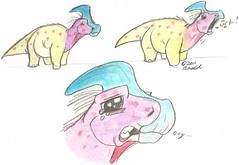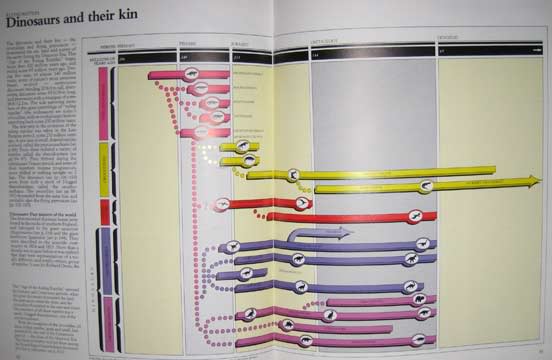
Let's zoom in a little:
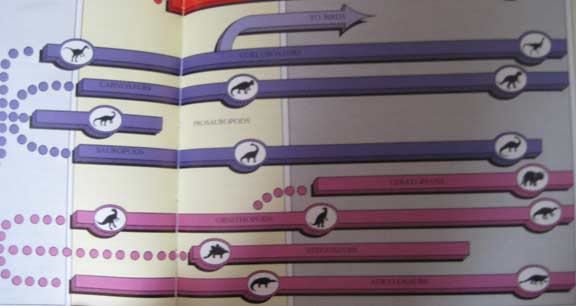
Note that the little Theropods don't even appear to be related to the big Theropods at all (at least the arrow that leads "to Birds" is very definitely emerging out of those little theropods). Look close and you'll also see what can only be described as a "retro" Iguanadon and a couple of sauropods in the classic space-saving "neck curled back over body, tail curled forward beside body" pose (can anyone from SV-POW who may happen to read this let me know if that is even anatomically possible?)
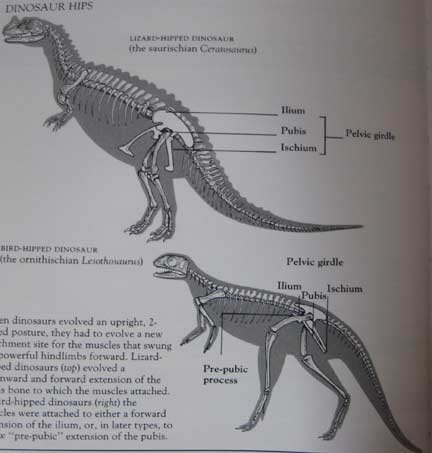
Before the dinosaur section really gets rolling, we get these two skeletal drawings to explain Ornithischians and Saurischians. Oh gosh, those tails...
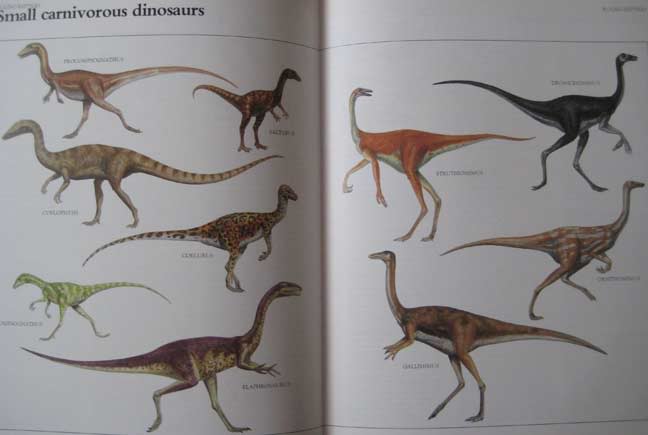
So here's our first group of, er, "Small Carnivorous Dinosaurs". Elaphrosaurus was thought to be some kind of early Ornithomimid back then.
And then, things get weird:
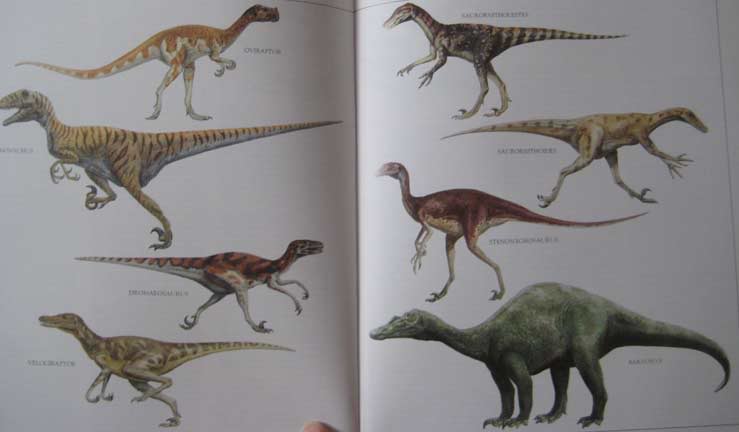
80's Maniraptors! I'm gonna say it. I'm gonna say it. Naked maniraptors look stupid. And note the improbably skinny little kangaroo hands on Deinonychus.
And WTF is Baryonyx doing there? Why is he on all fours? Man, no wonder people were surprisingly likely to confuse spinosaurs and pelycosaurs back then.
Except...
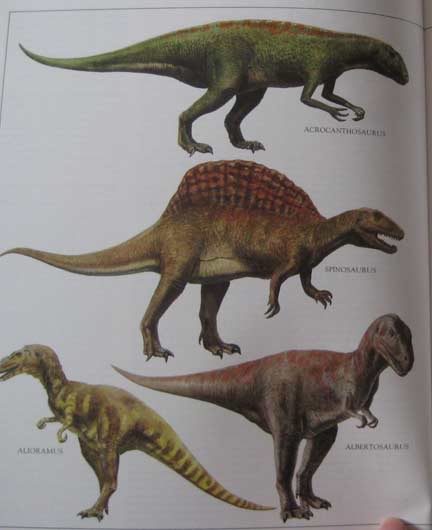
Except here's Spinosaurus, and he is apparently a close relative of Acrocanthosaurus. Because they both have big spines, you see. Also, it looks like they are both Tyrannosaurs, because they are large.
What?
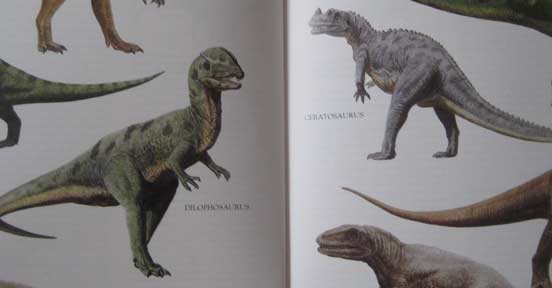
Here's another big, burly Dilophosaurus, in among his fellow large Carnosaurs (including a really Kaiju-esque Ceratosaurus). Anyone know what the deal is with these burly Dilophosaurs?
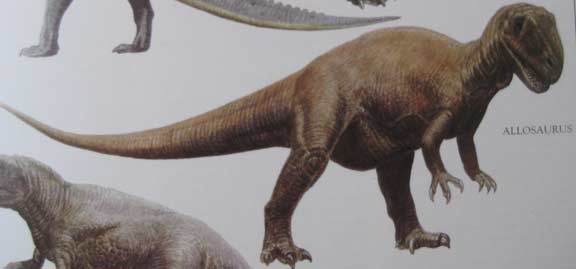
A very 80's Allosaurus. Very, very different from what we're used to now, but every big theropod in this book looks essentially like this; no cool horn bosses or feather spikes or bright colors or anything.
That's not to say the whole dinosaur chapter is a gauntlet of Real is Brown. Now, normally the feathered maniraptors would be the only animals to be colorful. But since Birds is Birds, there's no potential for Sparkleraptor sightings.
Instead, we get Sparkleornithischians:
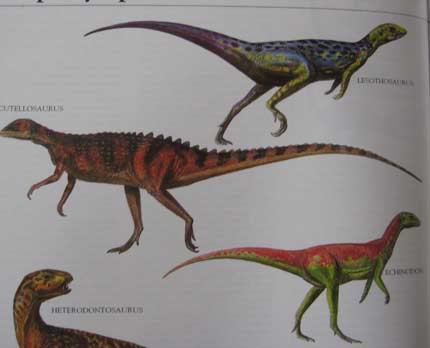
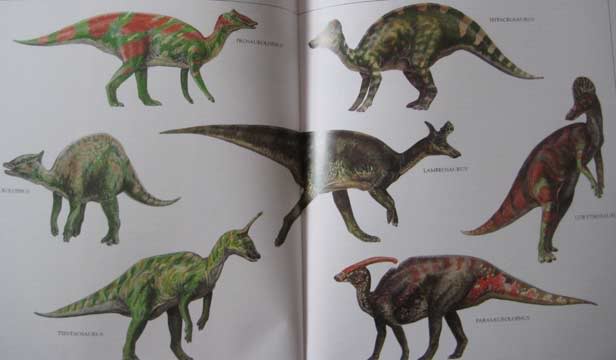
So pretty! I like the tie-dye patterns on the hadrosaurs. Also note that little "insert back of horn here" notch on Parasaurolophus.
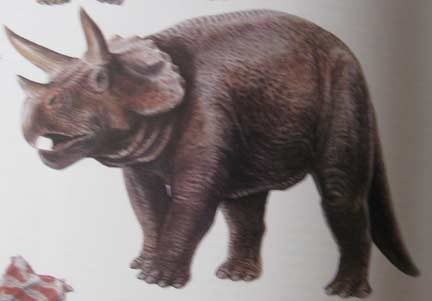
There's nothing half as exciting as that in the rest of the chapter. This Triceratops looks a little odd to my eyes. Like a *just* borderline McLoughlin-ceratops.

You can almost hear her crying, "Oh for goodness sake, the readers know that!"
So basically, The Macmillan Illustrated Encyclopedia of Dinosaurs and Prehistoric Animals is a good book for the time it was written. Oddly, the Encyclopedia was published again in 1999 under the title The Simon and Schuster Encyclopedia of Dinosaurs and Prehistoric Creatures. And this new book contained several new illustrations... but only for newly included animals. Everyone got the same illustrations as in the older book and mostly the same text (Baryonyx is even still a "raptor"). Kind of a cheap move for a book that deserves a fully revised and updated edition.
----
Art of the Day!
I made my own Sparkleornithopod!
